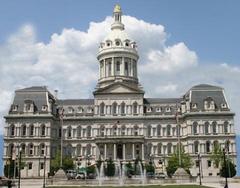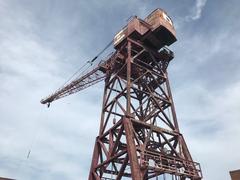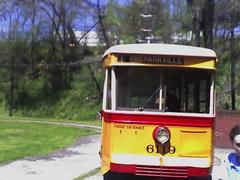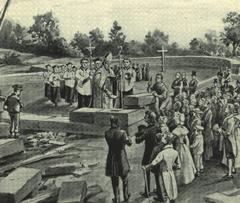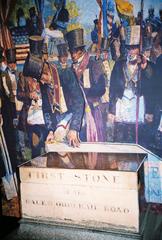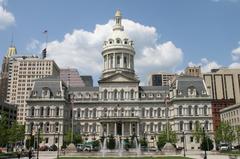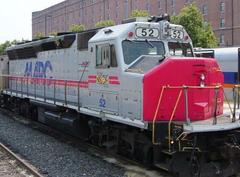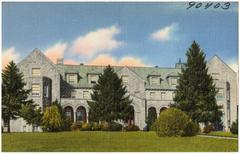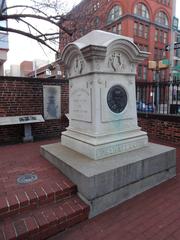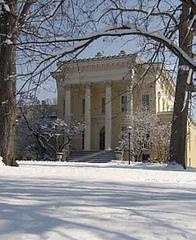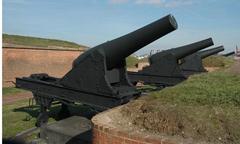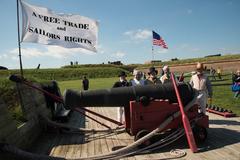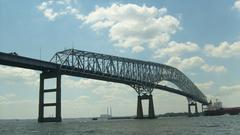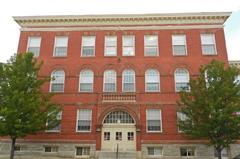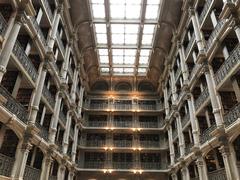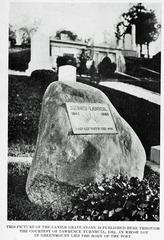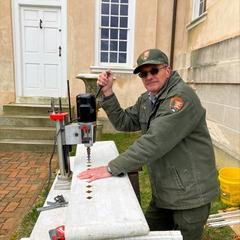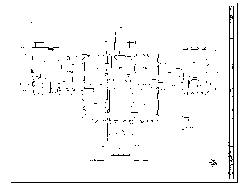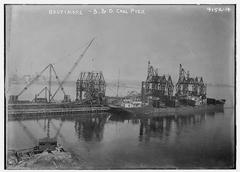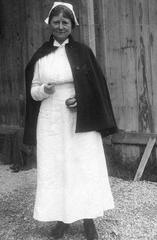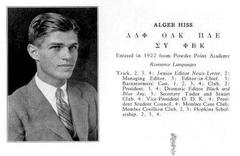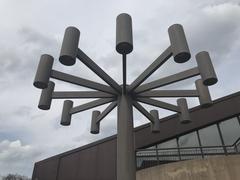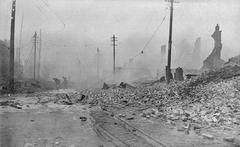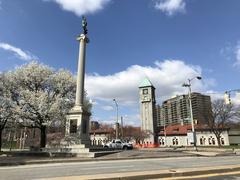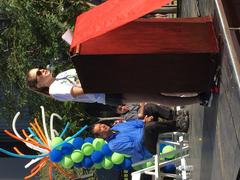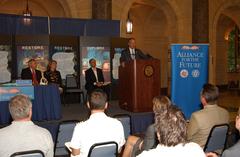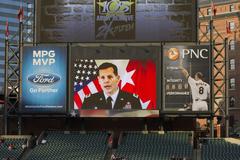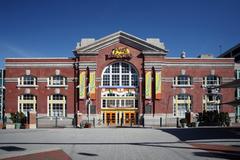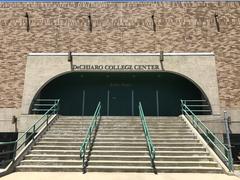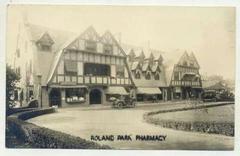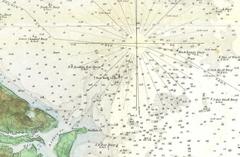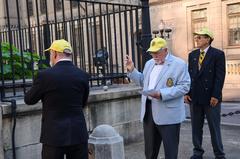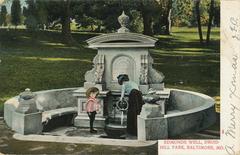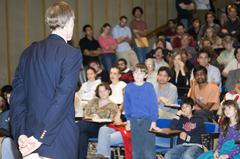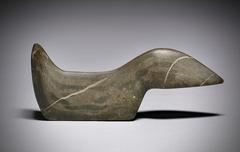
Dickeyville Historic District Baltimore: Visiting Hours, Tickets, and Travel Guide
Date: 04/07/2025
Introduction to Dickeyville Historic District, Baltimore
Nestled along the tranquil Gwynns Falls stream in western Baltimore, the Dickeyville Historic District offers an immersive journey into the city’s industrial and architectural past. As one of Baltimore’s oldest continuously inhabited neighborhoods, Dickeyville is celebrated for its beautifully preserved stone cottages, historic mill buildings, and scenic natural surroundings. This guide provides detailed information on visiting hours, guided tours, accessibility, events, and nearby attractions, ensuring you make the most of your trip to this hidden gem.
For the latest updates and event details, consult the Dickeyville Community Association, and discover more about Baltimore’s mill villages through resources like the Maryland Historical Trust and Baltimore City Historic Districts.
Table of Contents
- Overview and Historical Background
- Architectural Highlights and Village Layout
- Visiting Information: Hours, Tours, and Accessibility
- Outdoor Activities and Nearby Attractions
- Community Life and Events
- Visitor Tips and FAQs
- Conclusion: Plan Your Visit
- References and Further Reading
Overview and Historical Background
Dickeyville traces its beginnings to the late 17th century, with Welsh trader Richard Gwin settling in the area around 1672 and forming early ties with the local Algonquian peoples (Wikipedia). The village flourished in the 18th and 19th centuries as a mill town, producing textiles and paper, and underwent several name changes—Franklinville, Wetheredville, and finally Dickeyville, after mill owner William J. Dickey (Dickeyville Community Association).
The district’s prosperity is reflected in its enduring stone row houses, churches, and school buildings, all set within a distinctive “Y”-shaped street plan that follows the curves of Gwynns Falls (Baltimore City Historic Districts). Dickeyville’s continuous habitation and emphasis on preservation have earned it a place on the National Register of Historic Places (Maryland Historical Trust).
Architectural Highlights and Village Layout
Dickeyville is renowned for its harmonious blend of architectural styles and thoughtful village design:
- Federal and Greek Revival Homes: Early 19th-century stone houses with symmetrical facades, gabled roofs, and classical details.
- Victorian and Vernacular Styles: Later residences feature decorative trim, bay windows, porches, and a picturesque charm.
- Notable Landmarks:
- The four-story stone house built in 1848 by William Hendrick stands as a testament to local craftsmanship (Dickeyville Village History).
- The 1873 brick mill building remains a symbol of the neighborhood’s industrial heritage.
- The Dickey Memorial Presbyterian Church (1885), a Gothic Revival structure with striking stained glass and a prominent bell tower (Dickeyville Community Association).
The village’s layout—shaped by Wetheredsville Road and Pickwick Road—fosters a sense of intimacy and community. Many buildings retain original fieldstone, brickwork, wood-shingled roofs, and wrought-iron hardware, with preservation efforts ensuring the district’s unique character endures (Baltimore City Commission for Historical and Architectural Preservation).
Visiting Information: Hours, Tours, and Accessibility
Visiting Hours and Admission
Dickeyville Historic District is open to visitors year-round during daylight hours, generally from 9:00 a.m. to 6:00 p.m. There is no admission fee to walk the public streets and admire the architecture. The district is residential—please respect private property.
Guided Tours and Special Events
Guided walking tours are offered seasonally and during special events, such as Doors Open Baltimore. These tours typically last about 90 minutes and provide in-depth insights into Dickeyville’s history and architecture. Tickets for such events may be required; check the Doors Open Baltimore website or the Dickeyville Community Association Events page for schedules and booking.
Accessibility
Due to the historic nature of the village, some streets and sidewalks may be uneven or steep. Visitors with mobility concerns are encouraged to contact the Dickeyville Community Association for information on accessible routes and accommodations. No public restrooms are available within the district.
Outdoor Activities and Nearby Attractions
Dickeyville’s idyllic location on the edge of Leakin Park and the Gwynns Falls stream offers ample opportunities for recreation:
- Gwynns Falls/Leakin Park: Over 1,000 acres of trails for hiking, biking, and nature walks. The Gwynns Falls Trail connects Dickeyville to other Baltimore neighborhoods and is open daily from dawn to dusk (Baltimore City Historic Districts).
- Carrie Murray Nature Center: Features educational exhibits and programs, open Wednesday through Sunday, 10:00 a.m. – 4:00 p.m. (Carrie Murray Nature Center).
- Forest Park Golf Course: Located a short distance away, welcoming golfers of all levels.
- Nearby Dining and Shopping: While Dickeyville itself is residential, dining and shopping options can be found in nearby Catonsville and along Route 40.
Community Life and Events
Dickeyville’s vibrant community organizes events throughout the year:
- Fourth of July Festival: Parade, dinner, dance, and golf tournament—open to all visitors.
- Halloween and Winter Caroling: Festive decorations and community gatherings.
- Historic Home and Garden Tours: Offered occasionally; check the community events page for announcements.
The Dickey Memorial Presbyterian Church and other repurposed historic buildings serve as gathering places, highlighting the district’s strong sense of community and tradition.
Visitor Tips and FAQs
Getting There and Parking
- By Car: Dickeyville is easily accessible by car from downtown Baltimore, with street parking available.
- By Public Transit: Options are limited; CityLink buses plus rideshare are recommended.
- By Bike: The Gwynns Falls Trail offers a scenic cycling route.
Amenities
- No restaurants, shops, or public restrooms within the historic district. Bring water and snacks.
- Additional facilities and dining options are available in adjacent neighborhoods.
Safety and Etiquette
- Dickeyville is a peaceful, family-friendly area. Respect private property and minimize noise.
- Standard urban safety precautions apply, especially in parks and after dark.
FAQs
Q: Are there visiting hours or entrance fees?
A: No entrance fees. The district is open to visitors year-round during daylight hours.
Q: Are guided tours available?
A: Yes, especially during special events. Check the Dickeyville Community Association for schedules.
Q: Is the district accessible for those with mobility challenges?
A: Some areas may be difficult to navigate. Contact the association for accessible options.
Q: Are pets allowed?
A: Pets are welcome on area trails but must be leashed.
Q: Are there public restrooms in the district?
A: No, plan ahead.
Conclusion: Plan Your Visit
Dickeyville Historic District offers a singular blend of historic architecture, natural beauty, and vibrant community life. Whether embarking on a self-guided walk, joining a special event, or exploring the adjacent parks, visitors are treated to an authentic slice of Baltimore’s history.
Start planning your visit today by exploring the Dickeyville Community Association for event updates, tour information, and travel tips. Download the Audiala app for audio tours and the latest news on Baltimore’s historic neighborhoods.
For more travel inspiration, visit related resources such as the Maryland Historical Trust and the Visit Baltimore Official Guide.
References and Further Reading
- Dickeyville Historic District, Wikipedia
- Dickeyville Community Association
- Baltimore City Historic Districts
- Ethnovisions
- Maryland Historical Trust
- Doors Open Baltimore
- Visit Baltimore Official Guide
- I Travel For The Stars
- Carrie Murray Nature Center









